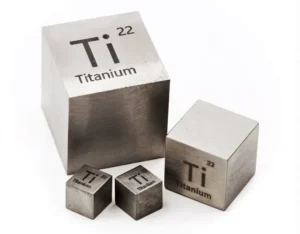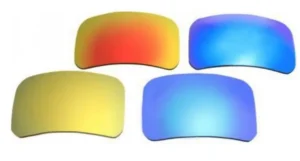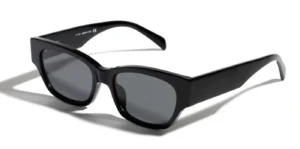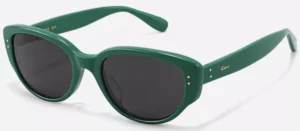When it’s time for sunglasses to shine again, do you know how to check the quality of sunglasses? Are your sunglasses really stylish and do they fit you?
When it comes to choosing fashionable and protective sunglasses, it’s important to consider more than just the designer brand or price tag. High-quality sunglasses not only enhance your style, but also protect your eyes from UV rays and the sensitive skin around your eyes.

On the other hand, poor quality sunglasses may look stylish but can actually harm your vision and overall eye health. So, what are the 7 key factors that affect the quality of sunglasses? Sunglasses manufacturers have identified the following:
Learn More : How to check the sunglasses quality ?
1.How important is UV protection to the quality of sunglasses?
The UV protection function is crucial for the quality of sunglasses. The darkness of the lens does not necessarily correlate with UV protection. The effectiveness of UV protection depends on the manufacturing process and materials used, rather than just lens color. It’s important to confirm UV protection with manufacturers, brands, agents, and retailers.

To ensure your eyes are fully protected, look for sunglasses labeled as blocking 99% or 100% of UV rays. Some labels may also state “UV absorption up to 400nm” or UV400, which is equivalent to 100% protection.
When selecting high-quality sunglasses, protecting your eyes from harmful UV rays should be your top priority. So, make sure to check the level of UV protection before making your purchase.
2.What is the best material for sunglasses frames?
Choosing the right glasses and materials for your glasses can be a daunting task, especially when it comes to selecting the perfect sunglasses. When purchasing sunglasses, it’s important to consider the durability and safety of the frame and whether it suits your lifestyle.
The FDA recommends checking the functionality, comfort, and aesthetics of the sunglasses’ frame. There are various frame materials available, each with their own advantages:
Learn More : The best sunglasses material
2.1 Titanium Glasses Frames
Titanium is a pure metal with a density of 4.5. It is highly ductile, non-reactive to magnetic fields, and hypoallergenic, making it a popular choice in space technology, jewelry, surgical instruments, and eyewear. It is considered the most high-end material in the eyewear industry.

Titanium frames are 48% lighter than regular metal frames, reducing the burden on the nose bridge. They are also highly durable, resistant to scratches and corrosion, and have good plasticity. Compared to other metal materials, titanium frames are less likely to warp or fade, making them highly stable and exuding an air of sophistication and elegance.
There are three types of titanium frames: pure titanium, titanium alloy, and beta titanium frames. Pure titanium frames are made entirely of 99% high-purity titanium. Titanium alloy frames have a titanium alloy rim or main body, providing a firm and sturdy structure. Beta titanium frames have a beta titanium rim or main body, providing high elasticity and strength.
2.2 High-End Alloy Glasses Frames
High-end alloy frames are a popular and commonly used material category composed of two or more metals. They are highly durable, corrosion-resistant, and have a lustrous shine.
There are several types of high-end alloy frames, including copper alloys, Monel alloy frames, nickel-chromium alloys, memory alloy frames, stainless steel frames, gold-plated frames, and platinum frames. These frames are known for their unique metallic texture, which perfectly combines quality and fashion.
High-end alloy frames have a strong and sturdy structure, making them highly durable. They are also corrosion-resistant, which means they do not rust or deteriorate easily. Their lustrous shine adds a touch of elegance and sophistication to any outfit, making them a popular choice for those who want to make a statement with their eyewear.
2.3 Memory Glasses Frames
Memory Glasses frames are available in two materials: plastic and metal.
Plastic Glasses memory frames are lightweight and can be twisted and pulled without losing their shape. They are also hypoallergenic, making them a great choice for those with sensitive skin.
Metal memory Glasses frames have good elasticity and can be bent up to 180 degrees without losing their shape. They can also automatically return to their original shape when subjected to external forces.
Memory Glasses frames are highly personalized and provide a comfortable and snug fit. They are also aesthetically pleasing, making them a popular choice for those who want to make a fashion statement with their eyewear.
2.4 Acetate Glasses Frames
Acetate glasses frames are made by cutting and processing acetate sheets.
Acetate glasses are lightweight, hard, and have good glossiness. The addition of acetate enhances their durability and stability, making them resistant to deformation and discoloration. They are also aesthetically pleasing, with a wide range of styles and designs.
Acetate glasses frames are fashionable and easy to match with clothing. They combine the thickness of the sheet material with the metallic texture, showcasing personality and style. They are durable and long-lasting, making them a popular choice for those who want a stylish and reliable eyewear option.
3. Sunglasses should block glare
which is light reflecting off surfaces like water or metal. Glare is 10-12 times brighter than needed to see, causing eye strain and distraction that can be dangerous when driving or playing sports. To test sunglasses’ glare protection, put them on and look in a mirror. If you can see your eyes, the lenses lack sufficient tint depth to combat glare. Effective sunglasses completely obscure the eyes.
4. Sunglasses’ visible light protection in natural
For eye comfort on sunny days, choose sunglasses that block 75%-90% of visible light. Sunglasses that absorb at least 75% of visible light protect against blue light, which is part of the visible light spectrum. Blue light is difficult to look at directly, often causing people to squint.
It can also distort color perception. By filtering out blue light and most visible light, quality sunglasses reduce eyestrain and enhance color and clarity. Wearing proper sunglasses makes it easier to see comfortably on bright days.
5. The visual effects of sunglasses in natural
Sunglasses should allow you to see clearly and comfortably without squeezing your head. But loose sunglasses can also impair vision. Wrap-around and shielded sunglasses block UV rays entering from the sides, top and bottom of ordinary frames, but may increase optical distortion.
To test visual effects, wear the sunglasses and look at straight edges and lines like doorframes or floor tiles. Move your head back and forth to scan across the lenses. If the lines appear warped or curved, the lenses are flawed, causing visual distortion. Properly fitted sunglasses with high-quality lenses provide clear, undistorted vision.
6.Tinted Lenses of sunglasses
The tinting on sunglass lenses should be even and uniform, not blotchy patches of uneven color. For gradient lenses that transition from darker at the top to lighter at the bottom, the change in tinting should be smooth and consistent. If you plan to wear the sunglasses while driving, check that they meet traffic signal identification requirements.

Some heavy tints can distort colors like road signs, especially sunglasses with specialized UV blocking. Do not wear sunglasses while driving if they prevent you from properly identifying colors and signals. Properly tinted lenses have an even, consistent depth of color that protects against glare without distorting vision.
Grey lenses allow you to see true colors and are a common neutral tint suitable for most conditions without increasing contrast. Grey is ideal for golf, biking, or running.
Green lenses also reveal natural colors. This neutral tint works in most settings with less intense contrast in low light and eye fatigue relief in bright light.
Brown lenses are better suited for mild sunshine. They can increase contrast and are good for sports with glare like skiing, fishing, or boating.
Amber lenses block blue light. They boost brightness in overcast or foggy weather. Colors are shifted yellowish-orange with heightened contrast to maximize eye fatigue relief. Amber is great for athletes, pilots, or skiers.
Yellow lenses provide excellent depth perception and contrast in low light. They are the standard tint for overcast skiing conditions. Yellow is ideal for activities like target shooting.
In summary, grey and green tints work well universally while brown, amber, and yellow are specialized tints for particular sports and lighting conditions where their properties like contrast enhancement and blue light filtering are beneficial.
7. Polarized Sunglass Lenses:
Polarized filters are added to lenses through a special laminating process. Polarization is incorporated into hard resin and high-index plastic lenses during the casting process. For polycarbonate lenses, a polarized film is added while the material is still liquid. Regular sunglasses reduce visible light but have minimal glare protection, while most polarized lenses also contain chemicals that block UV rays.

Because they reduce glare, polarized sunglasses are popular with golfers, anglers, and outdoor sports enthusiasts. They are also recommended for drivers and computer users. By cutting down on glare, polarized lenses are ideal for activities done under bright sun and around reflective surfaces.
8. Sunglass Lens Coatings
Lens coatings reflect high-density light, reducing glare and the amount of visible light that reaches the eyes. To coat lenses, a thin layer of vaporized metal is applied in a vacuum chamber. Coating colors include silver, blue, bronze, or amber, though most colors are purely cosmetic and do not aid eye protection. Metal coatings often use chromium, which is less scratch-resistant than high-performance titanium or quartz dielectric coatings.
Lens coatings generally boost the depth of color evenly across the sunglasses. They cut glare by reflecting some light while allowing sufficient light transmission for sharp vision. Quality sunglass lens coatings provide glare protection without overly dimming brightness.
9. Photochromic Lenses
Photochromic lenses that automatically adjust tint are a compromise if you don’t want to switch between prescription glasses and sunglasses frequently. These light-sensitive lenses darken in 30 seconds when exposed to bright light. Once back indoors, they lighten again within 2 minutes. Photochromic lenses offer the convenience of glasses and sunglasses in one pair.
They provide glare protection that adapts to changing light conditions, especially useful for driving. However, some photochromic lenses may not tint as dark as true sunglasses. And their tinting can be impacted by temperature.
10. Impact resistance of sunglasses
Most sunglasses are impact resistant. Sunglasses with glass lenses shatter when impacted compared to plastic lenses. Also, you may want to buy polycarbonate lenses (CR39) when shopping for sunglasses. This is because they are more impact resistant than regular plastics. If you decide to use polycarbonate lenses, pair them with scratch-resistant sunglasses.

Summary of sunglasses quality:
Our sunglasses are essential for protecting your eyes from sunlight, and they are also an important fashion accessory that can be worn every day to improve your appearance.
Therefore, as a family responsible for the custom sunglasses manufacturers to remind you once again, from now on, in addition to considering the appearance, we always recommend you also take into account the factors we mentioned, carefully check the quality of sunglasses, to ensure that you buy to high quality and A healthy Sunglasses.



